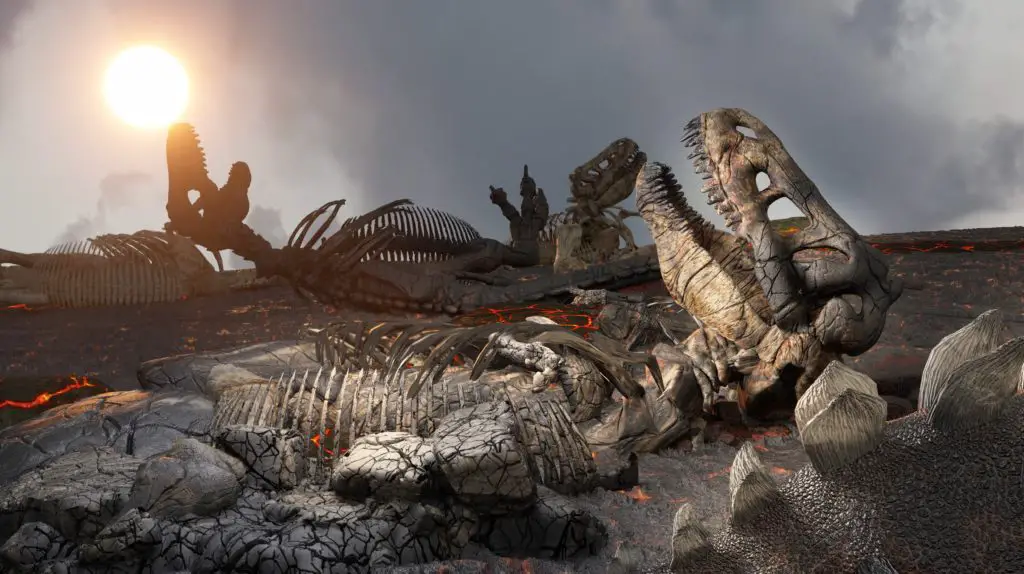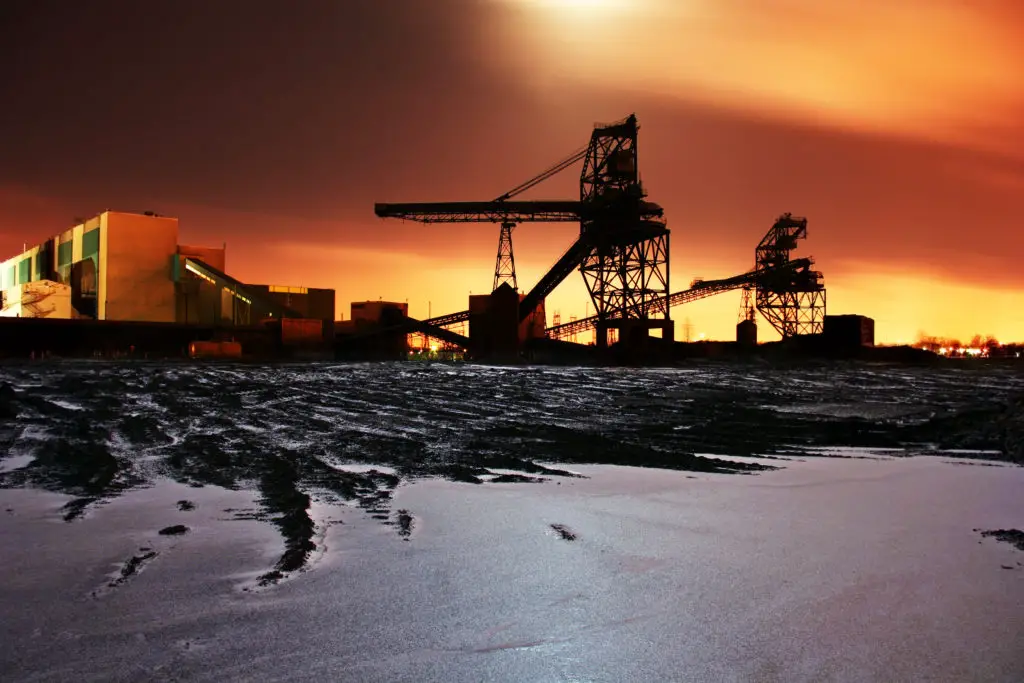The notion that oil is derived from the remnants of colossal dinosaurs is a persistent misconception that has captured the public’s imagination for decades. Picture this: you roll up to the gas station, imagining that you’re filling your vehicle’s tank with refined T-Rex juice. It’s a captivating image, but unfortunately, it’s far from the truth. In reality, the origins of oil are rooted in the microscopic world of trillions of minuscule algae and plankton.

Geologist Reidar Müller, a distinguished expert from the University of Oslo, is adamant about setting the record straight. He points out that, “For some strange reason, the idea that oil comes from dinosaurs has stuck with many people. But oil comes from trillions of tiny algae and plankton.” In this article, we will delve into the fascinating science behind the formation of oil, dispelling the dinosaur myth and shedding light on the genuine source of this invaluable resource.
The Reality: Ancient Microorganisms
To understand the genuine origins of oil, we need to journey back in time, not to the age of the dinosaurs, but to a time when the Earth’s oceans teemed with microscopic life forms. These life forms, primarily algae and plankton, are the unsung heroes behind the formation of oil. Over millions of years, these tiny organisms lived, died, and settled at the bottom of ancient oceans.
As layers of sediment accumulated on top of them, the immense pressure and heat from the Earth’s crust caused a remarkable transformation. Through a process known as diagenesis, the organic matter within these sediments underwent chemical changes. This transformation slowly converted the organic remains of these ancient microorganisms into the hydrocarbons that we now know as crude oil.

Geological Forces at Work
The geological forces at play during this process were astounding. Over eons, the Earth’s crust shifted and folded, burying these organic-rich layers deeper and deeper beneath the surface. The immense heat and pressure, coupled with the geological movements, continued to cook these sediments, driving the transformation of organic matter into hydrocarbons.
This gradual, natural process took millions of years to unfold, culminating in the creation of vast reservoirs of crude oil deep within the Earth’s crust. These reservoirs, often found in underground rock formations, are the primary sources of the oil we extract and refine for various purposes today.
Exploring the Origins of Fossil Fuels
Fossil fuels store energy within the atomic bonds composing their molecules. When these fuels are burned, these bonds break apart, liberating energy initially harnessed from the sun. This solar energy was captured by green plants through photosynthesis millions of years ago. Some of these plants were consumed by animals, transferring this energy up the food chain, while others decomposed naturally.
It is worth noting that any of these organisms, upon their demise, have the potential to transform into fossil fuels, as pointed out by Azra Tutuncu, a geoscientist and petroleum engineer at the Colorado School of Mines in Golden. However, this transformation requires specific conditions, including an oxygen-free (anoxic) environment, and most importantly, an immense amount of time.

For instance, the coal we utilize today originated approximately 300 million years ago, coexisting with dinosaurs. However, dinosaurs did not contribute to coal formation. Instead, plants that thrived in swamps and bogs perished, sank to the depths of these waterlogged areas, partially decayed, and transitioned into peat. Subsequently, as these wetlands dried up, additional materials covered the peat. Under the influence of heat, pressure, and time, this peat evolved into coal. Extracting coal now necessitates deep excavation into the Earth’s crust.
Petroleum, encompassing oil and natural gas, follows a distinct genesis story rooted in ancient seas. Within these aquatic realms, minuscule organisms known as plankton lived, perished, and descended to the seabed. As sediment settled through the water column, it enveloped the deceased plankton. Some of this organic matter served as a banquet for microbes, while chemical reactions further altered the buried materials. Eventually, this process yielded two key substances: waxy kerogen and bitumen, a viscous black substance integral to petroleum.
The transformation continues with kerogen undergoing further changes as it becomes buried deeper within the Earth’s crust, subjected to escalating temperatures and pressures. Under the right conditions, kerogen metamorphoses into the hydrocarbons—molecules comprising hydrogen and carbon—that we recognize as crude oil. With even higher temperatures, kerogen can evolve into the smaller hydrocarbons constituting natural gas.
These hydrocarbons, being less dense than the surrounding rock and water in Earth’s crust, tend to migrate upward, unless obstructed by an impermeable layer. When trapped, they accumulate, forming reservoirs that persist until drilling operations release them for extraction. This intricate process underpins the origins of the fossil fuels that power our modern world.
Tips for Responsible Resource Usage
In an era where the environmental consequences of our reliance on oil have become undeniably evident, it is incumbent upon us to reflect on our role in responsible resource usage. It’s not just a matter of protecting the planet; it’s about ensuring a sustainable future for ourselves and generations to come. To that end, here are some valuable tips and strategies to consider as we navigate the complex landscape of resource consumption and conservation.
- Diversify Your Energy Portfolio: One of the foremost steps towards responsible resource usage is to reduce our dependence on fossil fuels. Embrace the possibilities offered by alternative energy sources such as solar and wind power. Solar panels on rooftops and wind turbines on open landscapes can significantly reduce our reliance on finite resources like oil and coal. By transitioning to cleaner energy options, we contribute to a greener and more sustainable world.
- Embrace Energy Efficiency: Enhancing energy efficiency is a pivotal facet of responsible resource usage. It involves optimizing the way we utilize energy in transportation, residential spaces, and industrial processes. Simple measures, such as upgrading to energy-efficient appliances, properly insulating homes, and using public transport or carpooling, can drastically reduce our overall energy consumption. The key is to do more with less, ensuring that we extract the maximum value from every unit of energy expended.
- Support Renewable Energy Technologies: Transitioning to renewable energy sources is not just a trend; it’s a necessity. We can actively participate in this transition by adopting renewable technologies in our daily lives. Consider investing in solar panels for your home, or support policies that encourage the expansion of wind and solar farms. By doing so, you help bolster the growth of clean energy infrastructure, making it more accessible and affordable for everyone.
- Champion Resource Conservation: Responsible resource usage extends beyond energy considerations. It encompasses a broader spectrum of natural resources, including water, minerals, and raw materials. Adopting conservation practices such as reducing, reusing, and recycling can significantly mitigate the depletion of these resources. Opt for eco-friendly products, reduce single-use plastics, and be mindful of your water consumption. Small changes can lead to significant reductions in resource wastage.
By adopting these practices and committing to responsible resource usage, we can collectively steer our world towards a cleaner, more sustainable future. It’s a shared responsibility, not just for the betterment of our environment but also for securing a higher quality of life for ourselves and the generations that will inherit the planet. Let’s strive for a harmonious balance between our needs and the Earth’s resources, for the benefit of all.
Source: Where fossil fuels come from

This Site Was Inspired By An Interest in Protecting the Environment:
We had the privilege and joy of learning from Dr. Charlie Stine who instilled a love for the natural world through incredible field trips with the Johns Hopkins Odyssey Certificate program in Environmental Studies. At the time, the program was endorsed by the Maryland Department of Natural Resources. Sadly, after Dr. Stine retired, the program was phased out. We hope that we honor his legacy by shining a bright light on environmental issues and sharing good news about the success of various conservation programs when possible.

